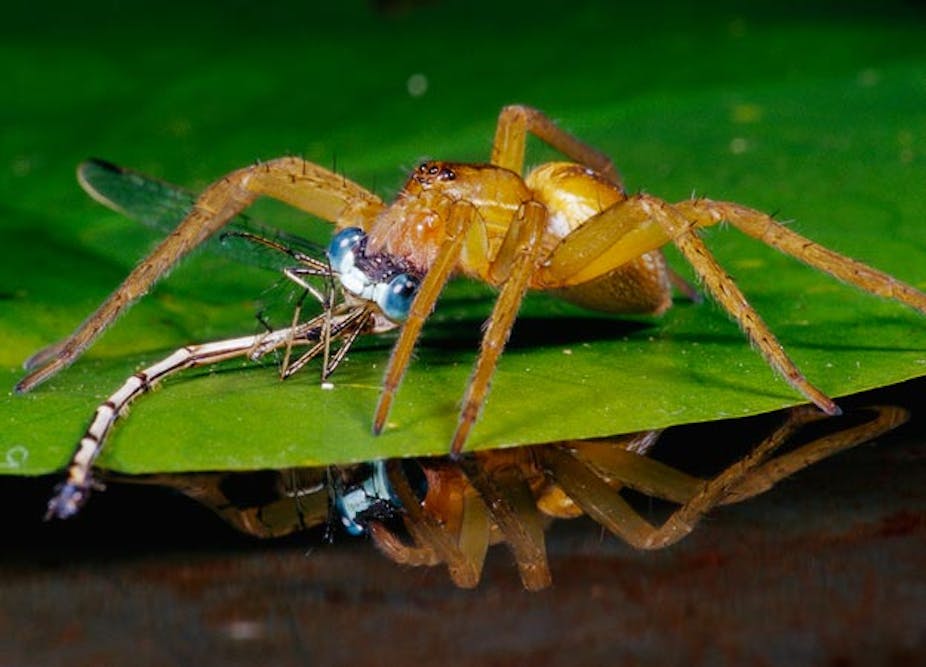It all starts with a disastrous human presumption: the animal world is there to be used, abused and mocked. Cage it, memorialise it, idealise it, and worship its remains with a sickly reverence through cable television subscriptions.
This is the anthropomorphic premise behind Monster Bug Wars, a show that starts its second season on Foxtel’s Animal Planet channel this evening. It might be worm vs. spider, cockroach vs. mantid, ant vs. land crab, and so on.
In Monster Bug Wars, animals are merely human representatives writ large, killing, maiming and eating with lusty bravura. Humans, it seems, are doing them a favour, articulating their deepest secrets, their habitats, their desperate struggle for survival.
Could science, even in a popular medium such as television, go any lower?
From its opening minutes, Monster Bug Wars resembles something of a military training exercise. “Get a ringside seat for some of nature’s deadliest encounters”, reads the show’s tagline. “Losers aren’t just KO’d, they’re eaten alive.”
Do such words reveal a channeling of the Roman gladiatorial contests? Instead of seeing Christians consumed with relish by lions, or gladiators slaughter each other with imperial approval, we’re seeing representatives of the natural world hunt and munch with ruthless glee.
The camera crew are nearby to witness and record these unfortunates as they end up as triumphant eaters or the defeated eaten.
A closer, more contemporary point of comparison might be the murder-mystery genre, though Monster Bug Wars is not the Hercules Poirot of the insect world.

The show’s pilot episode, Death at Midnight, featured a “battle” between the Spiny Leaf Insect and the Giant Rainforest Mantid.
For the public relations machine behind the show and its broadcasters, these critters are the “Rainforest Monsters”. Vicious, violent and desperate, they “go head-to-head” in what is “an all-out assault where only one survives”.
Other questions are asked throughout this death struggle to lure the viewer in. “Can a Black House Spider outpoint its arch-rival, the White-Tailed Spider?” This is war, after all. “When bugs go to war there’s just one guarantee – you’re either dead or alive.”
YouTube has kindly made specific samples available for general viewing. One such clip, entitled “Super Model of the Spider World” (see below), shows the eponymous hero in conflict with its rival – a fly she eventually poisons and devours. (Oh, the ways of vicious, eight-legged females.)
One can barely call this show a documentary – even though it’s listed in Foxtel’s “News & Documentaries” strand. Its expert commentary resembles a gaggle of teenage, computer-addled viewers who might have downed one energy drink too many. One thing’s for sure: the show is so cliché-ridden it should be sinking under the weight.
Often, the terms employed by the narrator appear to have come straight from the George Lucas manual on how to describe an expanding, evil empire. And lo and behold, one episode is titled “Enemy Empire”.
The anthropomorphic idea here is that animals are merely objects of human expression and delectation. They are warriors; they are the enslaved.

There are “Mexican” shootouts and showdowns, bringing into play the narrative of the American empire and its happy quest to subjugate the Hispanic and the Native American. Human prejudice manifests itself, even when looking at something that is far from human.
While people will always be interested in the creatures of the animal kingdom, they will persist in distinguishing themselves from it. Animals remain humanity’s objects for show, toys and distractions.
That it should now be the stuff of cable television simply continues that old, biblically-endowed tradition from Genesis – human beings are god-made creatures who were given a calling to subjugate the earth and its humble representatives.

